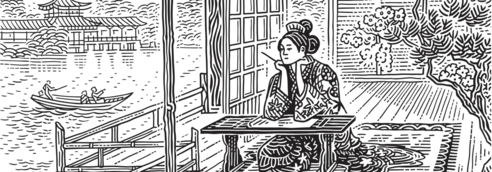Nowadays, the most famous type of Japanese poetry in the West is the haiku, a poetic form that developed in the 1600s. However, we can trace the haiku’s roots to early Japanese poetry, specifically waka poetry by Heian‐era courtiers.
For this activity, try writing your own haiku. However, before you begin, you must know some of a haiku’s crucial elements.
Syllable structure: Haikus consist of 3 lines with a syllable pattern 5–7‑5, totaling 17 syllables. Modern haiku, especially English ones, can have a more flexible format. However, composing within the traditional framework can be a fun challenge.
Kigo: This is a seasonal word or phrase included to anchor the poem in nature, the passing of time, or a season. Try to include at least 1 reference to natural phenomena or a particular time of year.
Kireji: A “cutting word” (kireji) is sometimes used to create a pause or provide emphasis, giving the haiku a subtle shift in tone or perspective.
A haiku is usually about a brief experience and the poet’s accompanying feeling or reflection. Think of haiku as verbal snapshots of time. Because of their brevity, haiku are open to interpretation. For example, here’s a famous haiku about Kyoto by master poet Matsuo Basho:
Even in Kyoto,
hearing the cuckoo’s cry,
I long for Kyoto.
Although we cannot be sure, many people believe that Basho was trying to convey nostalgia for a special place we know we must leave; we anticipate our future memories and the longing and desire to relive our time there.
Now you try. The experience you write about does not have to be profound. Also, do not get too hung up on counting syllables. Remember something you observed, describe it briefly, and then state your feelings. Here are several more haiku examples:
I write, and I listen
to the purring of the cat
by the window sill.
The rain is falling—
and I forgot my umbrella,
but I do have a hat.
The squirrel in my yard
keeps raiding the bird feeder—
it’s not a bird, you know.

